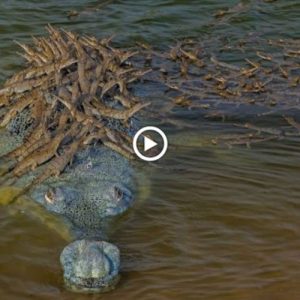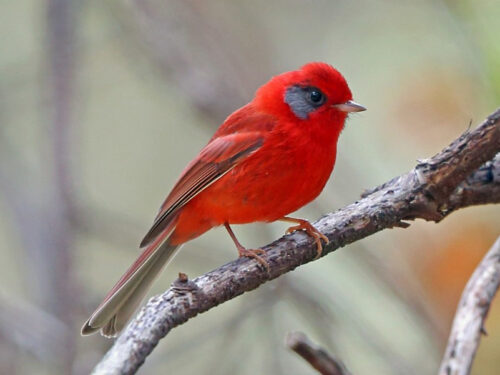
Birdwatchers and nature enthusiasts are constantly enthralled by the diverse and mesmerizing avian species that inhabit our planet.
Among them, the Red Warbler (Cardellina rubra) stands out as a unique and enigmatic creature.
With its vibrant colors, elusive behavior, and remarkable adaptations, this bird has captivated the hearts of many.
In this article, we will explore the fascinating world of the Red Warbler, delving into its appearance, habitat, threats, and intriguing behaviors.
-The Red Warbler’s Unique Habitat and Range:
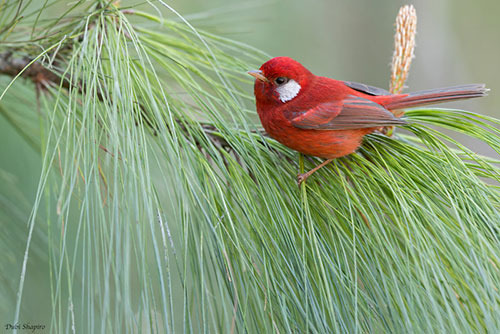
Endemic to Mexico, the Red Warbler is a small passerine bird that calls the high-altitude forests of the Sierra Madre Occidental and Sierra Madre Oriental mountain ranges its home.
This elusive species thrives in the dense understory of oak, pine, and fir trees, adding to its mysterious allure.
While its range extends from Chihuahua and Durango in the north to Oaxaca and Chiapas in the south, isolated populations can also be found in Guatemala and Honduras.
-Striking Plumage and Distinctive Features:
The Red Warbler’s appearance is truly remarkable. With its bright red plumage covering most of its body, except for its wings and tail, it easily catches the eye.
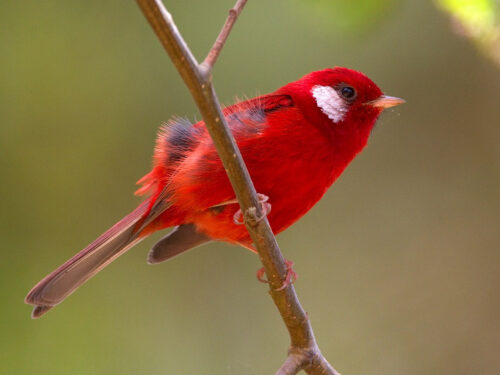
Adding to its allure, the bird boasts a black mask that extends from its bill to its eyes, while its underparts exhibit pale gray or white coloring.
Both males and females possess these vibrant characteristics, with the male exhibiting slightly more vivid hues.
-Vocalizations and Acrobatic Behavior:
The Red Warbler is known for its melodious songs that consist of a series of high-pitched trills, warbles, and whistles.
These vocalizations serve as a means of communication with its mate and defense of its territory.
Additionally, the bird exhibits acrobatic behavior, gracefully hopping and fluttering among branches and leaves while foraging for insects and spiders.
Its aerial displays and feeding rituals are a spectacle to behold.
-Conservation Challenges and Threats:
Sadly, the Red Warbler faces significant conservation challenges.
Deforestation, climate change, and habitat fragmentation are all posing threats to its habitat and population.
These factors have led to declines in both its range and overall population.
Efforts must be made to protect and preserve the high-altitude forests where this species resides, ensuring its survival for future generations.
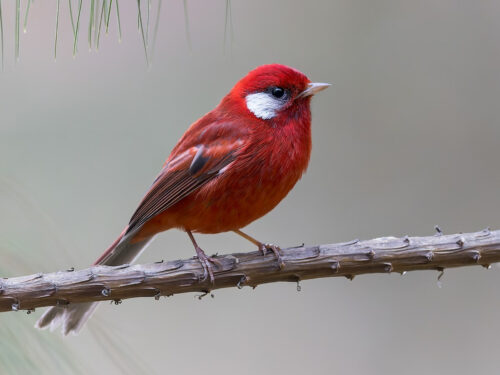
-Breeding and Reproduction:
During the summer months, from May to July, the Red Warbler engages in breeding activities.
The male establishes a territory and serenades potential mates with its beautiful song.
Courtship involves aerial acrobatics and feeding rituals.
The female constructs a cup-shaped nest made from plant fibers and spider webs, usually positioned in a shrub or sapling close to the ground.
She then lays 2-4 eggs, which she incubates for approximately 12 days.
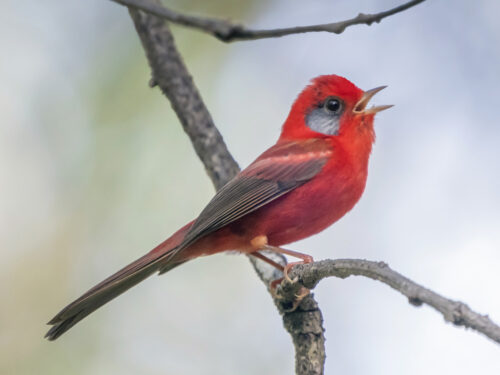
The Red Warbler, with its vibrant plumage, elusive nature, and captivating behaviors, remains a symbol of the remarkable beauty found in the natural world.
As a species endemic to Mexico, its presence in the high-altitude forests highlights the importance of conservation efforts.
By understanding and appreciating this enigmatic bird, we can work towards ensuring its survival and preserving the wonder it brings to avian enthusiasts and nature lovers alike.
Video:





